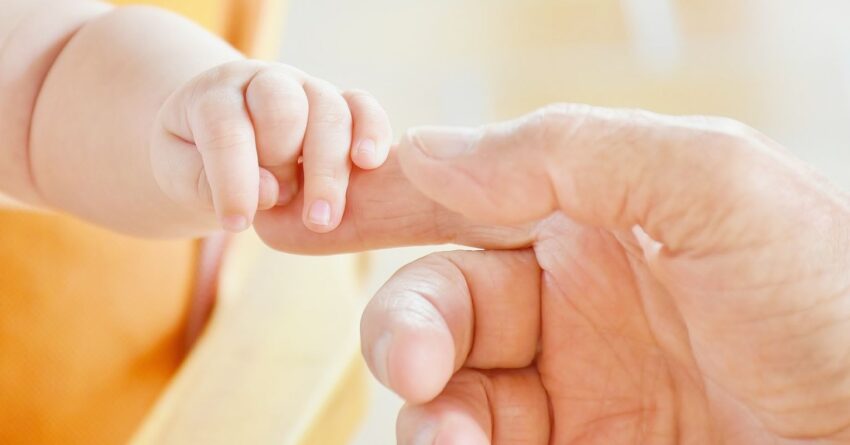Thought experiment: What would life be like if you did not have a sense of touch?
Our skin is our largest sense organ, constituting 16 to 18 percent of adult body weight, and we rely on it heavily in our commerce with the world. Touch is a versatile sense, capable of delivering and receiving complex and nuanced information.
Touching is available to us long before language, and our initial interactions with our environment—parents, caregivers, objects—rely heavily on touch. In fact, optimal child development is dependent in part on touch. As Polish psychologist Agnieszka Sorokowska and colleagues write: “During childhood, gentle parental touch is pivotal for socio-emotional development … and the amount of maternal touch predicts the development of infantile social brain areas.”

Source: Jarmoluk / Pixabay
Later in life, touching plays a central role in adult life, particularly with regard to our romantic and sexual relationships. “Embracing, hugging, or kissing constitute a primary way in which people communicate affection, passion, and intimacy in romantic relationships, and a higher frequency of touch is associated with feelings of greater intimacy during relationship development.”
Touch Deprivation
The importance of touch to our development, relationships, and overall well-being is clarified further when you consider how we react to a scarcity of touch. Research has shown that touch deprivation predicts a host of adverse outcomes, including negative body image in females, greater violence and aggression in adolescents, increased anxiety, and overall lower quality of life. The negative connotations of living without touch are signaled in language by terms such as “out of touch,” “lost his touch,” and “tactless.”
The frequency and meaning of touch differ by situational, relational, and cultural contexts. A recent (2021) study by Agnieszka Sorokowska and colleagues surveyed 14,000 individuals from 45 countries, inquiring about their touching habits and memories. The authors found that “affective touch was most prevalent in relationships with partners and children, and its diversity was relatively higher in warmer, less conservative, and religious countries, and among younger, female, and liberal people.”
The fundamental importance of touch has raised scholarly interest in touch-based interventions, and a large literature has accumulated over the years exploring the efficacy of such interventions for adults, children, and newborns. A 2010 literature review by the American psychologist Tiffany Field, a pioneer in the study of touch, has concluded that caregiving touch in early development is essential for growth. The review also highlighted the power of friendly touching in casual social interaction to convey emotions and intentions and to affect request compliance (for example: when passengers touch a bus driver while requesting a free ride, they are more likely to get it). It emphasized the documented effectiveness of massage therapy in the treatment of pain and stress. The review also discussed the physiological and biochemical pathways by which the effects of touch are delivered, including the tendency of touch to result in decreases in blood pressure and heart rate, as well as decreased levels of the stress hormone cortisol levels, and increased levels of oxytocin (a.k.a. the love hormone).
New Study
Recently (2024) German behavioral neuroscientist Julian Packheiser and colleagues conducted a systematic review of 75 studies along with a meta-analysis of 137 additional studies (total n = 12,966 individuals) to “identify critical factors moderating touch intervention efficacy.” Included in the analysis were only those studies that featured a touch versus no touch control intervention, along with some health outcome as a dependent (outcome) variable.
Results revealed that, overall, touch interventions have a medium-sized effect, with the largest benefits found for anxiety, depression, fatigue, and pain. Touch interventions were especially effective in regulating cortisol levels and increasing weight in newborns. Clinical adult cohorts (those individuals diagnosed with a mental health disorder) were found to benefit more than nonclinical cohorts. While most touch interventions analyzed were massage therapy in adults and “kangaroo care” in newborns, the research did not find significant differences between different types of touch interventions. Overall, participants’ sex did not appear to moderate the results in either adults or newborns, with some exceptions. For one, adult women experienced more reduced cortisol than did men.
Interestingly, when skin-on-skin touching interventions were compared with touch interventions involving objects or robots, the results showed similar physical benefits but lower mental health gains. In other words, skin-to-skin contact appears to carry unique mental health benefits for adults. The authors found “no difference in health benefits in adults when comparing touch applied by a familiar person or a health care professional.” However, parental touch was more beneficial for newborns than the touch of an unfamiliar person.
Relationships Essential Reads
The authors then attempted to find out “How often and for how long should touch be delivered?” For adults, “the median touch duration across studies was 20 minutes and the median number of touch interventions was four sessions with an average time interval of 2.3 days between each session.” For newborns, “the median touch duration across studies was 17.5 min and the median number of touch interventions was seven sessions with an average time interval of 1.3 days between each session.” Delivering more touch sessions increased benefits in adults. Specifically, “positive associations between the number of sessions and outcomes were found for trait anxiety, depression, and pain.” Interestingly, increasing the duration of touch interventions did not improve their benefits. In fact, longer touch sessions may act to reduce some of the benefits associated with such interventions.
The authors conclude “Overall, touch interventions were beneficial for both physical and mental health.”
Take home message: Keep in touch…
